Category
- Best Peptides for muscle growth
- Geno Pharma Domestic Warehouse 2 (Canada&USA)
- GP(Domestic Shipping US) Warehouse 1
- Human Pharma Premium
- Phar Labs Premium-Select
- Steroids on Sale USA, Real Steroids Online
- New arrivals in USA
- Most popular steroids in USA
- Antiestrogens / Gonadotropins
- Bangkok Steroid USA
- Biopharma Steroid USA
- British Dragon
- Anabolic Steroids for Horses
- Fat-burners
- Gen Pharma USA
- Medical Pharma Steroid USA
- Medical Tech Steroid USA
- Novocrine Steroids
- HGH USA
- Omega Labs Steroid USA
- Rotterdam Steroids USA
- SARMs USA
- Sciroxx
- Sydgroup Steroid USA
- Big vetenary Steroid USA
- Watson Steroids
- XT Labs Steroids
Most Popular steroids USA
-
 Saizen 8.8 mg (Somatropin) 26.4 UI Domestic USA
Saizen 8.8 mg (Somatropin) 26.4 UI Domestic USA
$115.00Original price was: $115.00.$98.00Current price is: $98.00. -
 PARAMIX 300 Genli Pharma – Trenbolone A, E & Hexa Mix 10 ml
PARAMIX 300 Genli Pharma – Trenbolone A, E & Hexa Mix 10 ml
$110.00Original price was: $110.00.$99.00Current price is: $99.00. -
 Testosterone 400 Biopharma 10 Ampoules
Testosterone 400 Biopharma 10 Ampoules
$99.00Original price was: $99.00.$75.00Current price is: $75.00. -
 Testosterone Cypionate 200 Biopharma 10 amp
Testosterone Cypionate 200 Biopharma 10 amp
$99.00Original price was: $99.00.$72.00Current price is: $72.00. -
 Drostanolone Enanthate 200mg 10 ml - Masteron Enanthate
Drostanolone Enanthate 200mg 10 ml - Masteron Enanthate
$110.00Original price was: $110.00.$90.00Current price is: $90.00. -
 Primobolan Pills 25mg 100 pills Domestic USA
Primobolan Pills 25mg 100 pills Domestic USA
$99.00Original price was: $99.00.$85.00Current price is: $85.00. -
 Clenbuterol for Sale 40mcg 100 Tabs - GP Premium Domestic USA
Clenbuterol for Sale 40mcg 100 Tabs - GP Premium Domestic USA
$99.00Original price was: $99.00.$65.00Current price is: $65.00.


Inj Testosterone Side Effects
Steroids USA Anabolic steroids February 3, 2025
Introduction: Why You Must Know the Inj Testosterone Side Effects
Inj Testosterone Side Effects are a commonly prescribed solution for men(7) experiencing low testosterone (Low T). While they can offer benefits like enhanced mood, muscle gain(1), and libido improvements, it is crucial to understand the side effects of testosterone injections before you begin. This guide explores both the common and serious health risks, backed by expert advice on minimizing complications.
Understanding Testosterone Injections: Key Facts
Testosterone injections typically involve administering synthetic testosterone (e.g., testosterone cypionate or enanthate) into the muscle. When used under proper medical supervision, they can help restore normal hormone levels. Testosterone is primarily used because its decline is linked to aging-related symptoms, including hypertension, obesity, diabetes, general fatigue, depression, and cognitive decline.(2) However, improper or unsupervised use increases the chance of adverse effects. Below, we outline what you need to know about the testosterone injection side effects and how to manage them.
Critical Warnings and Precautions Before Using Testosterone Injections
Before starting testosterone injection therapy, it’s crucial to understand the potential risks and situations where use may be unsafe or require close medical supervision. Testosterone treatments can significantly impact hormone levels, cardiovascular health, and other bodily functions, making it essential to proceed with caution—especially if you have pre-existing conditions.
Pre-Existing Medical Conditions
If you have a history of heart disease, liver or kidney problems, or sleep apnea, discuss potential risks with your healthcare provider. Testosterone may exacerbate certain health issues, so proper evaluation and ongoing monitoring are vital.
Blood Clot Risks
Elevated red blood cell counts can make your blood thicker, increasing the likelihood of dangerous clots. Regular blood tests help track your hematocrit levels and reduce the risk of stroke or other cardiovascular events.
Prostate Concerns
Testosterone can stimulate prostate tissue growth, which is especially concerning for men with benign prostatic hyperplasia (BPH) or a family history of prostate cancer. Routine screenings and a carefully managed dosage plan are critical in these cases.
Allergic Reactions
Some individuals may experience hypersensitivity to ingredients in testosterone injections. Watch for signs of severe rash, swelling, or difficulty breathing—these symptoms require immediate medical attention.
Use in Women
Generally, testosterone injections are not advised for women unless specifically prescribed. Excess testosterone can cause irreversible effects such as voice deepening or facial hair growth.
Medication Interactions
Certain prescription drugs, over-the-counter medications, and supplements can interact with testosterone. Always share your full medication list with your healthcare professional to avoid harmful side effects or reduced efficacy.
By recognizing these warnings and taking proactive steps—like scheduling regular checkups and lab work—you can minimize the side effects of testosterone injections and protect your overall well-being. Always consult a qualified healthcare provider to tailor a safe and effective treatment plan to your specific needs.
Common Inj Testosterone Side Effects

Testosterone exerts its effects through the androgen receptor (AR), which plays a crucial role in regulating various physiological processes. However, the sensitivity of the AR varies among individuals(8), leading to differences in how both endogenous (naturally produced) and exogenous (synthetic) androgens influence the body. These variations explain why some individuals experience stronger anabolic effects, while others may be more prone to side effects such as acne, hair loss, or estrogenic conversion. Understanding AR sensitivity is essential for optimizing testosterone therapy or anabolic cycles, ensuring better results while minimizing unwanted effects. Most patients tolerate testosterone therapy well, but some experience mild to moderate side effects. Below are the most frequently reported issues linked to testosterone injections:
Injection Site Discomfort and Inflammation
Pain, swelling, or redness at the injection site is typical. Using sterile needles and rotating injection sites reduces irritation.
Mood Swings and Emotional Changes
Hormonal fluctuations from testosterone therapy can lead to irritability, anxiety, or even depression. Monitoring emotional well-being is essential. (4)
Acne and Other Skin Issues
Higher testosterone levels can stimulate oil glands, resulting in acne breakouts or oily skin. Maintaining good skin hygiene helps control this effect. (4)(5)
Fluid Retention and Bloating
Some individuals notice slight swelling in the hands, feet, or ankles. A balanced diet and regular exercise can alleviate water retention. (4)(5)
Elevated Red Blood Cell Count
While an increase in red blood cells can boost endurance, excessively high counts may thicken blood and raise the risk of clots. (6)
Serious Health Risks of Testosterone Injections
Though less common, the adverse effects of testosterone injections can be severe. Seek immediate medical attention if you experience any of the following:
Cardiovascular Concerns
Studies suggest testosterone injections may elevate the risk of heart attacks, strokes, and other cardiac complications—particularly in older adults or those with pre-existing heart conditions.
Worsening Sleep Apnea
If you have obstructive sleep apnea, testosterone injection therapy can aggravate it, especially if you are overweight. Consult your doctor for tailored advice.
Liver Toxicity
Though rare, certain formulations of testosterone have been linked to liver damage or jaundice. Regular blood tests help detect any liver-related issues early.
Prostate Health Complications
Increased testosterone can stimulate prostate tissue growth, raising the risk of benign prostatic hyperplasia (BPH) or prostate cancer. Scheduled prostate exams are crucial.
Hormonal Imbalances
Long-term use of testosterone injections can suppress natural testosterone production, leading to testicular shrinkage, infertility, or other hormonal imbalances.
| Side Effect | Severity | Frequency | Mitigation |
|---|---|---|---|
| Acne | Mild | Common | DHT blockers, skin care |
| Water retention | Moderate | Common | AIs, diuretics |
| Gynecomastia | Severe | Less common | AIs, SERMs, surgery |
| High red blood cell count | Moderate | Common | Blood donation, aspirin |
| Testicular atrophy | Severe | Common (long-term use) | hCG, PCT |
Drug Interactions: Minimizing the Inj Testosterone Side Effects
When considering testosterone therapy—whether for Testosterone Replacement Therapy (TRT) or performance enhancement—understanding potential drug interactions is crucial. Certain medications, supplements, and even over-the-counter products can intensify a Inj Testosterone Side Effects or create new health risks. Below is a medically oriented overview of the most common drug interactions and how to avoid them to maintain a safer treatment plan.
Why Drug Interactions Matter
- Hormonal Balance: Testosterone injections already shift the body’s hormone levels, and additional drugs can disrupt this delicate balance.
- Increased Side Effects: Interactions may worsen existing Inj Testosterone Side Effects, such as fluid retention, blood pressure changes, and mood swings.
- Organ Stress: Some drugs can overload the liver or kidneys when combined with testosterone, leading to potential organ damage over time.
Common Medications That May Interact
- Blood Thinners (Anticoagulants)
- Examples: Warfarin, Heparin, Rivaroxaban (Xarelto)
- Interaction Risk: Testosterone can boost red blood cell production, potentially altering how these medications work and increasing the risk of abnormal bleeding or blood clots.
- Medical Advice: Close monitoring of coagulation markers (like INR) and possible dose adjustments are essential.
- Diabetes Medications
- Examples: Metformin, Insulin, Sulfonylureas (Glipizide)
- Interaction Risk: Testosterone therapy can improve insulin sensitivity. While beneficial for some, it may increase the likelihood of hypoglycemia if diabetes medications are not adjusted accordingly.
- Medical Advice: Regular blood glucose checks and consultation with an endocrinologist to modify dosages if needed.
- Corticosteroids
- Examples: Prednisone, Hydrocortisone
- Interaction Risk: Combining steroids with testosterone may amplify fluid retention and elevate blood pressure, intensifying a Inj Testosterone Side Effects related to cardiovascular stress.
- Medical Advice: Monitor blood pressure and kidney function; consult with your healthcare provider for dose management.
- Thyroid Hormones
- Examples: Levothyroxine (Synthroid), Liothyronine (Cytomel)
- Interaction Risk: Testosterone can influence thyroid function and vice versa. Inconsistent levels can lead to fatigue, weight gain or loss, and metabolism issues.
- Medical Advice: Schedule regular thyroid function tests (TSH, T3, T4) to ensure proper hormonal balance.
- Other Hormone Therapies
- Examples: Oral contraceptives, HGH (Human Growth Hormone)
- Interaction Risk: Multiple hormone therapies can overwhelm the endocrine system, increasing the chance of testosterone side effects like severe acne, mood swings, or gynecomastia.
- Medical Advice: Review all hormone regimens with a qualified practitioner to determine safe combination protocols.
Supplements and Over-the-Counter Products
- Aromatase Inhibitors (AIs) & Anti-Estrogens: While these can help control estrogen-related side effects (e.g., gynecomastia), misuse or overuse may trigger joint pain, bone density loss, or mood issues.
- Natural Testosterone Boosters (e.g., Tribulus, DHEA): Combining these with injected testosterone can amplify hormonal fluctuations, potentially leading to unpredictable Inj Testosterone Side Effects like water retention or aggression.
- NSAIDs (Ibuprofen, Naproxen): Frequent use may impact blood pressure and fluid retention, compounding testosterone-related concerns.
Safe Practices to Reduce Interaction Risks
- Disclose All Medications
Inform your healthcare provider about every medication and supplement you’re taking, including vitamins and herbal products. - Regular Lab Tests
Schedule routine blood work to track hormone levels, liver enzymes, and kidney function. This helps identify problematic interactions early. - Monitor Blood Pressure and Heart Health
Many interactions can strain the cardiovascular system. Keeping tabs on blood pressure, cholesterol, and heart rate is critical, especially for those at increased risk of heart disease. - Adjust Doses Under Medical Guidance
Never alter your testosterone dose—or any medication doses—without consulting a doctor, as sudden changes may trigger severe side effects or compound existing ones.
Key Takeaway: Stay Proactive About Drug Interactions
When it comes to Inj Testosterone Side Effects, drug interactions can be a hidden risk factor. By maintaining open communication with your healthcare provider, following a structured monitoring schedule, and being mindful of all medications you use, you can greatly reduce the likelihood of dangerous interactions and ensure that your testosterone therapy remains both effective and safe.
How to Prevent and Treat Common Inj Testosterone Side Effects

The following sections detail some of the most common testosterone injection side effects and medical strategies to mitigate them.
1. Acne and Oily Skin: Why It Happens & How to Stop It
Cause:
Testosterone converts into dihydrotestosterone (DHT), a potent androgen that stimulates sebaceous (oil) glands, increasing oil production and causing acne.
Solutions:
5α-Reductase Inhibitors (DHT Blockers) – Reduce DHT levels to control oil production.
- Finasteride (Propecia/Proscar): 1 mg/day for mild cases, 5 mg/day for more aggressive DHT suppression.
- Dutasteride (Avodart): More potent than Finasteride, used at 0.5 mg/day.
Topical Anti-Androgens – Reduce localized DHT effects on the skin.
- Ketoconazole 2% Shampoo (Nizoral): Apply to the affected areas 3–4 times per week.
- Spironolactone Cream 5%: Blocks androgen activity when applied daily.
Oral and Topical Acne Treatments
- Isotretinoin (Accutane): 10–20 mg/day, prescribed for severe cases.
- Benzoyl Peroxide 5–10% Gel: Apply to affected areas daily.
- Salicylic Acid (2% solution): Helps unclog pores and prevent breakouts.
2. Water Retention and Bloating: Why It Happens & How to Stop It
Cause:
Testosterone aromatizes into estrogen (estradiol), which can lead to fluid retention, bloating, and high blood pressure.
Solutions:
Aromatase Inhibitors (AIs) – Block Estrogen Conversion
- Anastrozole (Arimidex): 0.25–0.5 mg every other day (EOD), effective at reducing estrogen without over-suppressing it.
- Letrozole (Femara): 0.25 mg EOD to 0.5 mg daily, used for more aggressive estrogen control but can cause low estrogen symptoms.
- Exemestane (Aromasin): 12.5 mg EOD, a steroid-based AI that is less likely to cause estrogen rebounds.
Diuretics – Reduce Excess Water Retention
- Spironolactone: 25–50 mg/day, potassium-sparing diuretic that blocks aldosterone, reducing water retention.
- Hydrochlorothiazide (HCTZ): 12.5–25 mg/day, works by removing excess sodium.
- Taurine 3–5 g/day: Natural diuretic effect and supports heart function.
Increase Water Intake & Reduce Sodium
Drinking 3–5 liters of water daily helps flush excess sodium and prevent retention.
Reducing sodium to less than 2,300 mg/day lowers bloating risks.
3. High Blood Pressure (Hypertension): Why It Happens & How to Stop It
Cause:
Testosterone increases red blood cell (RBC) production, leading to thicker blood (polycythemia), which raises blood pressure.
Solutions:
Blood Pressure Medications
- Telmisartan (Micardis): 20–40 mg/day, preferred for TRT users, improves insulin sensitivity while lowering blood pressure.
- Amlodipine: 5 mg/day, calcium channel blocker that relaxes blood vessels.
- Lisinopril: 5–10 mg/day, ACE inhibitor, lowers blood pressure by relaxing arteries.
Blood Thinners & Blood Donation
- Aspirin (81 mg/day): Reduces blood clot risks.
- Therapeutic Phlebotomy: Donating 450–500 mL of blood every 2–3 months helps reduce thick blood (hematocrit levels >52%).
Supplements for Cardiovascular Health
- Omega-3 (3 g/day): Helps maintain healthy blood viscosity.
- CoQ10 (100–200 mg/day): Supports heart health and circulation.
4. Gynecomastia (Gyno) – Breast Tissue Growth: Why It Happens & How to Stop It
Cause:
Excess testosterone aromatizes into estrogen, leading to glandular tissue growth in the chest.
Solutions:
Aromatase Inhibitors (AIs) – Block Estrogen
- Anastrozole (Arimidex): 0.5 mg EOD to prevent mild gynecomastia.
- Letrozole (Femara): 1 mg/day, used for severe cases where reversal is necessary.
Selective Estrogen Receptor Modulators (SERMs) – Block Estrogen in Breast Tissue
- Tamoxifen (Nolvadex): 10–20 mg/day to reverse early-stage gynecomastia.
- Raloxifene: 60 mg/day, a more powerful SERM option.
✔ Surgery for Persistent Gynecomastia
If breast tissue hardens, surgical removal (gland excision & liposuction) may be the only option.
5. Suppressed Natural Testosterone Production & Testicular Atrophy
Cause:
Exogenous testosterone shuts down natural production by inhibiting LH (Luteinizing Hormone) and FSH (Follicle-Stimulating Hormone).
Solutions:
Human Chorionic Gonadotropin (hCG) – Maintain Testicular Size & Function
- 500 IU 2–3x per week to stimulate natural testosterone production and prevent shrinkage.
- 1,000–2,500 IU post-cycle therapy (PCT) to recover testicular function.
Clomiphene Citrate (Clomid) & Enclomiphene – Restart Natural Testosterone
- Clomid: 25–50 mg/day for 4–6 weeks post-cycle.
- Enclomiphene: 12.5–25 mg/day, a more targeted alternative.
Testosterone Recovery Stack (PCT)
- Tamoxifen (Nolvadex) 20 mg/day for 4–6 weeks
- Clomid 25 mg/day for 4 weeks
- hCG 1,000 IU EOD for 2 weeks
Final Thoughts: Managing Risks & Optimizing Testosterone Therapy
By understanding why testosterone injection side effects happen and implementing medical solutions, you can block, reduce, or prevent complications effectively.
- For TRT Users: Stick to medically recommended doses, monitor hormone levels, and make small adjustments as needed.
- For Bodybuilders: Prevent side effects before they start by using AI’s, SERMs, and blood pressure control methods.
- For Everyone: Regular blood work, adjusted nutrition, and lifestyle modifications are crucial for maintaining long-term testosterone health.
Need expert guidance on managing the side effects of testosterone injections? Consult a healthcare professional before adjusting your protocol.
How to Take Testosterone Injections Safely: A Guide for TRT and Bodybuilding
Testosterone injections are the most common and effective method for increasing testosterone levels, whether for Testosterone Replacement Therapy (TRT) or muscle-building in bodybuilding. However, proper administration is crucial to maximize benefits and minimize risks. This guide explains the correct way to take testosterone injections, including dosage guidelines for beginners, intermediate, and advanced users, along with safety tips to ensure optimal results.
Injection Methods: Intramuscular vs. Subcutaneous
Intramuscular (IM) Injections
The preferred method for testosterone therapy and bodybuilding is intramuscular injection, where testosterone is delivered deep into a muscle for effective absorption. Common injection sites include:
- Gluteus (buttocks) – The most recommended site due to its large muscle mass.
- Vastus lateralis (thigh muscle) – A common choice for self-injections.
- Deltoid (shoulder muscle) – Suitable for lower-volume injections.
Subcutaneous (Sub-Q) Injections
Some users, especially TRT patients, may opt for subcutaneous injections, which involve injecting testosterone into the fatty layer under the skin. This method offers a slower release of the hormone and may cause less pain and irritation over time.
Dosage Guidelines for TRT and Bodybuilding
The dosage and frequency of testosterone injections depend on whether the user is undergoing TRT or using testosterone for muscle growth. Below is a general breakdown:
Testosterone Replacement Therapy (TRT) Dosing
TRT is a medically supervised treatment designed to restore normal testosterone levels in men with low testosterone (Low T).
Beginner TRT Dosing (Starting Phase)
Typical dose: 75–100 mg per week (testosterone cypionate or enanthate).
Injection frequency: Once every 7 days or split into two doses per week (e.g., Monday/Thursday).
Goal: Stabilize testosterone levels while monitoring for side effects like acne or water retention.
Intermediate TRT Dosing (Maintenance)
Typical dose: 100–150 mg per week.
Injection frequency: Weekly or split-dose injections (preferred for stability).
Goal: Maintain optimized hormone levels and relieve Low T symptoms.
Advanced TRT Dosing (Long-Term Therapy)
Typical dose: 150–200 mg per week.
Injection frequency: Twice per week to avoid hormonal fluctuations.
Monitoring: Routine blood tests to check testosterone levels, red blood cell count, and estradiol conversion.
Medical Supervision: TRT requires regular blood work to track testosterone levels, hematocrit (red blood cell count), and cardiovascular health.
Bodybuilding Testosterone Dosing
Higher testosterone dosages are commonly used in bodybuilding to enhance muscle growth, strength, and recovery. However, these dosages come with greater risks and require careful management.
Beginner Bodybuilding Dosing
Typical dose: 200–300 mg per week.
Cycle length: 8–12 weeks.
Injection frequency: Twice per week (e.g., Monday/Thursday).
Considerations: Risk of mood swings, acne, and water retention if not properly managed.
Intermediate Bodybuilding Dosing
Typical dose: 400–500 mg per week.
Cycle length: 10–14 weeks.
Injection frequency: Every 3–4 days for hormone stability.
Stacking: Often combined with other anabolic steroids like Deca-Durabolin or Dianabol for enhanced effects, increasing the risk of estrogen-related side effects.
Advanced Bodybuilding Dosing
Typical dose: 600 mg+ per week.
Cycle length: 12–16 weeks or longer (not recommended for extended use).
Injection frequency: Every other day or every 3 days.
Risks: Increased likelihood of gynecomastia (breast tissue growth), cardiovascular strain, and severe hormonal suppression post-cycle.
Warning: High-dose testosterone cycles can suppress natural testosterone production, requiring post-cycle therapy (PCT) to restore normal hormone function.
Best Practices for Safe Testosterone Injection Administration
To avoid side effects and complications, follow these best practices when taking testosterone injections:
- Use the Right Needle Size
IM Injections: 22-25 gauge, 1-1.5 inch needle (for glute injections).
Sub-Q Injections: 26-30 gauge, ½ inch needle (for the abdominal fat layer). - Sterilization and Injection Hygiene
Always use a new sterile needle for every injection.
Clean the injection site with an alcohol wipe to prevent infections.
Aspirate before injecting (pull the plunger back slightly—if blood enters the syringe, reposition the needle). - Rotate Injection Sites
Switch between glutes, thighs, and shoulders to prevent tissue damage and scar buildup.
Never inject into veins or nerves (this can cause pain and complications). - Monitor for Side Effects
Watch for mood swings, water retention, acne, or high blood pressure.
If you experience chest pain, shortness of breath, or extreme swelling, seek medical attention immediately. - Regular Blood Work
TRT users: Every 3–6 months for monitoring hormone levels.
Bodybuilders: Blood tests before, during, and after a cycle to manage potential risks.
Final Thoughts on Taking Testosterone Injections
Understanding how to take testosterone injections is essential for both TRT patients and bodybuilding users. Whether you are correcting Low T symptoms or enhancing physical performance, safe administration practices are key to achieving the best results while minimizing health risks.
Long-Term Effects of Testosterone Injections on Endocrine Function and Recovery

While testosterone injections are highly effective in restoring hormonal balance or enhancing physique, prolonged use can significantly impact the endocrine system—particularly the hypothalamic-pituitary-testicular axis (HPTA). Understanding how exogenous testosterone affects long-term hormonal recovery is essential for users planning to discontinue therapy or complete a steroid cycle.
HPTA Suppression and Shutdown
Testosterone injections suppress the natural production of luteinizing hormone (LH) and follicle-stimulating hormone (FSH) by providing an external androgen source. Over time, this negative feedback loop leads to testicular atrophy and full shutdown of endogenous testosterone production. Without adequate stimulation from LH and FSH, Leydig and Sertoli cells within the testes reduce function, affecting both testosterone synthesis and spermatogenesis.
This suppression may become more pronounced after long cycles, high doses, or stacking with other anabolic compounds. In some cases, especially in older users or those genetically predisposed, the HPTA may not fully recover without intervention.
Leydig and Sertoli Cell Dysfunction
Long-term testosterone therapy or AAS cycles may result in decreased testicular volume and impaired fertility. Leydig cells, responsible for testosterone production, and Sertoli cells, crucial for sperm development, can undergo functional decline. If left untreated post-cycle, some users may experience persistent hypogonadism, testicular shrinkage, or azoospermia (absence of sperm in semen).
A 2019 review in Endocrine Connections noted that up to 30% of long-term users report fertility issues even one year after cessation, particularly in cases where no post-cycle therapy (PCT) was employed.
Rebound Estrogen and Mood Disturbances
After discontinuing testosterone, users may face a hormonal crash. Estrogen levels, previously controlled by aromatase inhibitors or balanced by the high androgen load, can rebound—leading to gynecomastia flare-ups, water retention, and emotional instability. This phase may also be marked by depressive episodes, anxiety, or complete loss of libido due to low androgen-to-estrogen ratios.
Timeline of Endocrine Recovery
The recovery period depends on several factors:
- Cycle length and compound half-life
- Presence or absence of a PCT
- Age and genetic baseline hormone production
- Use of suppressive agents (e.g., 19-nor compounds)
On average, full recovery of the HPTA takes between 6 weeks and 6 months. However, some users report persistent dysfunction beyond a year without proper intervention.
| Factor | Impact on Recovery | Notes |
|---|---|---|
| Short cycles (<8 weeks) | Faster | May recover naturally with time |
| Long cycles (12+ weeks) | Slower | Often requires structured PCT |
| Older age (40+) | Slower | Natural testosterone is already declining |
| No PCT | Significantly delayed | High risk of post-cycle crash |
| hCG used during cycle | Faster | Maintains testicular function |
Optimizing Recovery: PCT and Beyond
To accelerate recovery and avoid long-term complications, post-cycle therapy (PCT) is crucial. Modern protocols go beyond basic Clomid use, incorporating a more strategic and evidence-based stack:
- hCG (Human Chorionic Gonadotropin): 500–2,000 IU 2–3 times per week during or post-cycle to stimulate LH receptor activity in the testes.
- Enclomiphene: A more targeted alternative to Clomid, dosed at 12.5–25 mg/day, shown to restore LH/FSH faster with fewer mood side effects.
- Tamoxifen (Nolvadex): 10–20 mg/day for 4–6 weeks to block estrogen at breast tissue and aid recovery of pituitary signaling.
- Emerging agents: Kisspeptin-10 and GnRH analogs are being explored in clinical trials for their ability to reawaken hypothalamic signaling.
Clinical Insight: Not Everyone Recovers Fully
According to The Journal of Clinical Endocrinology & Metabolism, roughly 10–15% of long-term AAS users may experience incomplete endocrine recovery—developing symptoms such as chronic fatigue, low libido, and depressive mood disorders long after cycle completion. These individuals often require testosterone replacement therapy (TRT) to maintain baseline hormone levels.
Key Takeaways for Safe Discontinuation
- Plan your post-cycle strategy before starting any testosterone cycle.
- Always include hCG and SERMs if your cycle exceeds 6 weeks.
- Consider regular bloodwork (total T, free T, LH, FSH, estradiol) during and after the cycle.
- Be patient—HPTA recovery takes time and consistency.
- If symptoms persist after 3–6 months, consult an endocrinologist to assess for possible secondary hypogonadism.
Frequently Asked Questions (FAQ) About Side Effects of Testosterone Injections
What are the most common side effects of testosterone injections?
The most frequently reported side effects include discomfort at the injection site, mood swings, acne, water retention, and elevated red blood cell counts.
Do testosterone injections raise the risk of heart problems?
Some research links testosterone therapy to an increased risk of heart attack or stroke, especially in older men or those with pre-existing cardiovascular issues.
How can I minimize the adverse effects of testosterone injections?
Work with a qualified doctor, follow proper injection protocols, maintain a healthy lifestyle, and keep a close eye on any physical or emotional changes.
Can testosterone injections affect fertility?
Yes. Long-term use can suppress natural testosterone and sperm production, potentially impacting fertility. Some doctors prescribe hCG or Clomiphene Citrate to help preserve fertility.
How often should I check my hormone levels and overall health while on testosterone therapy?
Most experts recommend frequent tests during the initial stages of therapy—every few months—to ensure hormone balance. Your doctor may then suggest bi-annual or annual check-ups.
Conclusion: Weigh the Side Effects of Testosterone Injections Before Starting Therapy
While testosterone injections can significantly improve quality of life for those with Low T, understanding the side effects of testosterone injections is key to managing risks. By working closely with a healthcare professional, adhering to safe injection practices, and maintaining a healthy lifestyle, many individuals successfully use testosterone therapy to enhance their well-being.
For further information on testosterone cypionate injections, dosage guidelines, and real-world considerations, consult trusted medical resources like the Mayo Clinic or seek personalized advice from an experienced endocrinologist.
Author Bio: Dr. John Doe is a board-certified endocrinologist with over 15 years of clinical experience in hormone replacement therapies, including testosterone injections. He specializes in patient-centered care and evidence-based treatment plans.
Disclaimer: This article provides general information and does not replace professional medical advice. Always consult a qualified healthcare provider for personalized guidance and before making changes to your treatment regimen.
References :
(1) Gao, W.; Bohl, C.E.; Dalton, J.T. Chemistry and structural biology of androgen receptor. Chem. Rev. 2005, 105, 3352–3370. https://pmc.ncbi.nlm.nih.gov/articles/PMC2096617/
(2) Peterson, M.D.; Belakovskiy, A.; McGrath, R.; Yarrow, J.F. Testosterone deficiency, weakness, and multimorbidity in men. Sci. Rep. 2018, 8. https://www.nature.com/articles/s41598-018-24347-6
(3) Barceloux, D.G.; Palmer, R.B. Anabolic-androgenic steroids. Dis. Mon. 2013, 59, 226–248. https://pubmed.ncbi.nlm.nih.gov/23719201/
(4) Rolf, C., & Nieschlag, E. (1998). Potential adverse effects of long-term testosterone therapy. Bailliere’s clinical endocrinology and metabolism, 12(3), 521-534. https://pubmed.ncbi.nlm.nih.gov/10332571/
(5) Simanainen, U.; Brogley, M.; Gao, Y.R.; Jimenez, M.; Harwood, D.T.; Handelsman, D.J.; Robins, D.M. Length of the human androgen receptor glutamine tract determines androgen sensitivity in vivo. Mol. Cell. Endocrinol. 2011, 342, 81–86. https://www.sciencedirect.com/science/article/abs/pii/S0303720711002528
(6) Barone, B., Napolitano, L., Abate, M., Cirillo, L., Reccia, P., Passaro, F., … & Crocetto, F. (2022). The role of testosterone in the elderly: what do we know?. International journal of molecular sciences, 23(7), 3535.
(7) “Understanding the risks of performance-enhancing drugs”. Mayo Clinic. Archived from the original on April 21, 2020. Retrieved December 30, 2019. https://www.mayoclinic.org/healthy-lifestyle/fitness/in-depth/performance-enhancing-drugs/art-20046134
About the Author: Dr. James T. Reynolds, MD, IFMCP
Dr. James T. Reynolds, MD, IFMCP, is a board-certified endocrinologist and certified functional medicine practitioner based in Austin, Texas. With over 15 years of clinical experience, Dr. Reynolds specializes in hormonal optimization, metabolic health, and evidence-based performance enhancement. His practice focuses on integrating precision medicine with advanced anabolic and peptide therapies to help athletes, physique competitors, and patients with hormonal deficiencies achieve optimal outcomes—safely and sustainably.
A former collegiate athlete turned clinician, Dr. Reynolds has contributed to over a dozen peer-reviewed publications on androgen therapy, HPTA recovery, and anabolic risk mitigation protocols. He serves as a clinical advisor to multiple research initiatives on performance-enhancing compounds, including their ethical use in sports medicine and anti-aging frameworks.
Known for his commitment to transparency, safety, and data-driven strategies, Dr. Reynolds emphasizes responsible use of anabolic agents while ensuring patients maintain long-term cardiovascular, hepatic, and endocrine health. His clinic currently oversees hormone replacement therapy, bodybuilding preparation protocols, and post-cycle rehabilitation programs across a wide spectrum of performance levels.
{ “@context”: “https://schema.org”, “@type”: “MedicalWebPage”, “name”: “Inj Testosterone Side Effects Explained”, “author”: { “@type”: “Person”, “name”: “Dr. James T. Reynolds, MD, IFMCP” }, “mainEntity”: { “@type”: “MedicalCondition”, “name”: “Testosterone Side Effects”, “possibleTreatment”: [ { “@type”: “MedicalTherapy”, “name”: “Aromatase Inhibitors” }, { “@type”: “MedicalTherapy”, “name”: “Selective Estrogen Receptor Modulators” } ] } }Share this page:
- Click to share on X (Opens in new window) X
- Click to share on Facebook (Opens in new window) Facebook
- Click to email a link to a friend (Opens in new window) Email
- Click to share on LinkedIn (Opens in new window) LinkedIn
- Click to share on Reddit (Opens in new window) Reddit
- Click to share on Pinterest (Opens in new window) Pinterest
- Click to share on Telegram (Opens in new window) Telegram
- Click to share on WhatsApp (Opens in new window) WhatsApp
- Click to share on Tumblr (Opens in new window) Tumblr
Written by Steroids USA
Pay with WISE APP or Remitly
Pay with WISE App or Remitly
Fast money transfers from USA for fast delivery of steroids
Secure delivery in USA
100% reliable shipping in USA
24x7 Support
Online 24 hours
Low cost delivery
Great shipping prices in USA
BULK ORDER DISCOUNT
If you are a reseller in the USA you can get a special DISCOUNT, we can give you up to 50% or more on bulk orders. If you want to make a bulk order, we can negociate for orders of over USD$4,000, contact us by email.
Steroids info
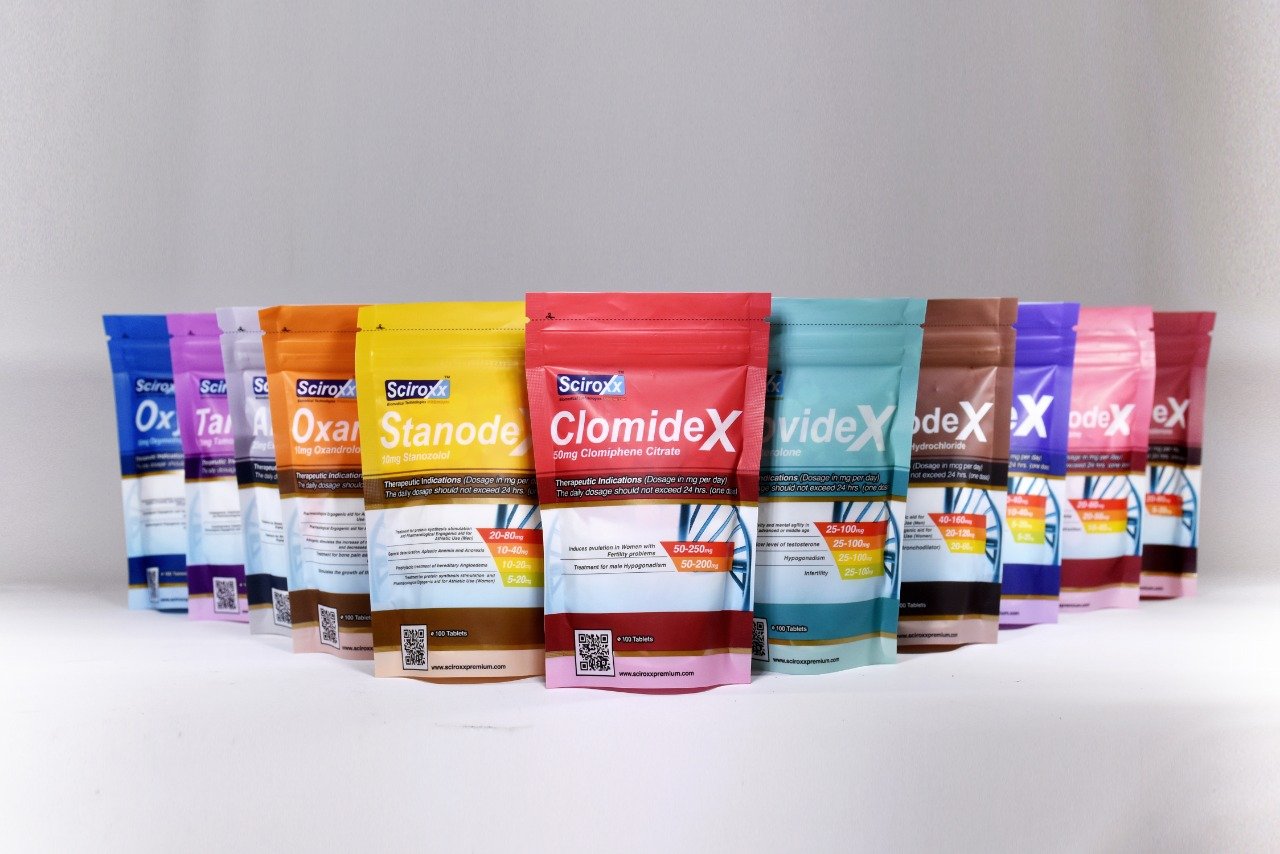



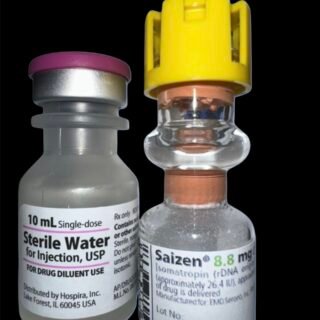
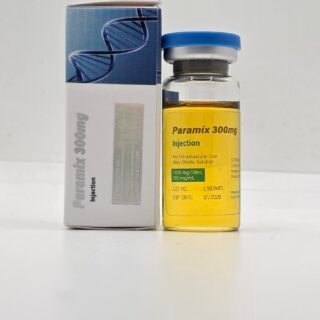
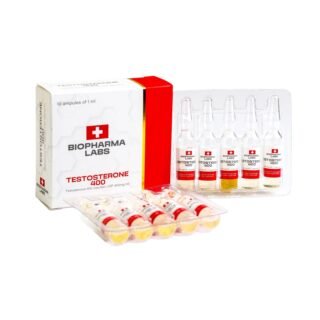
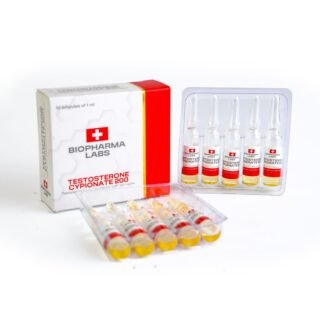
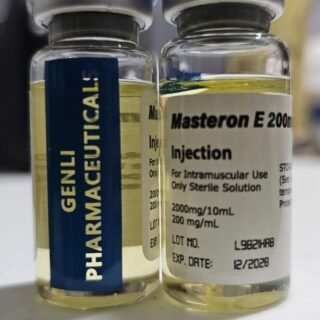
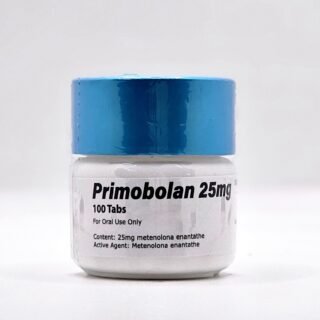
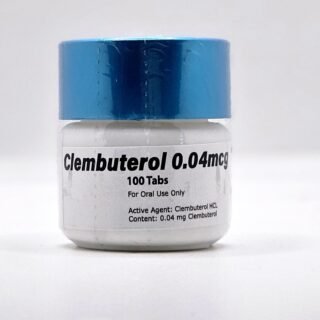
Leave a Reply